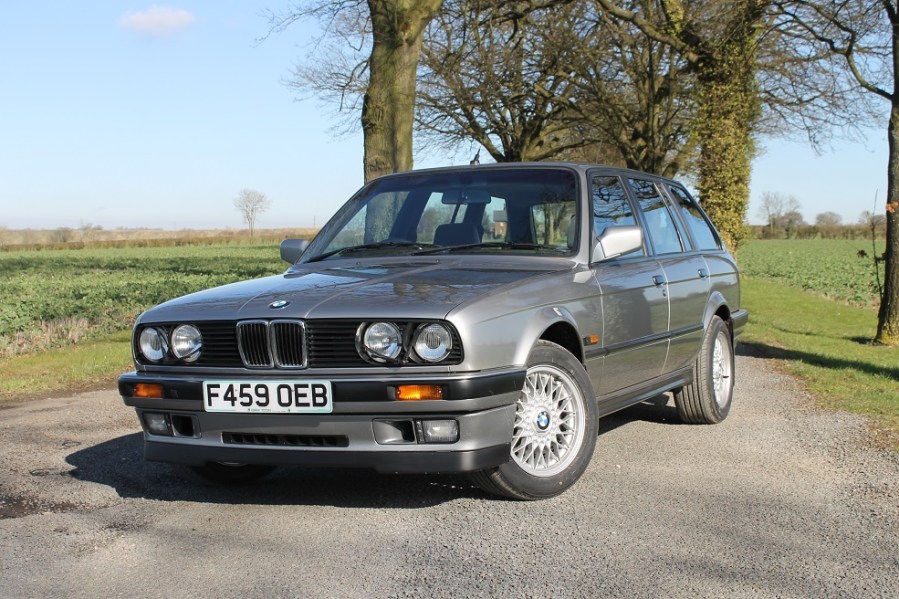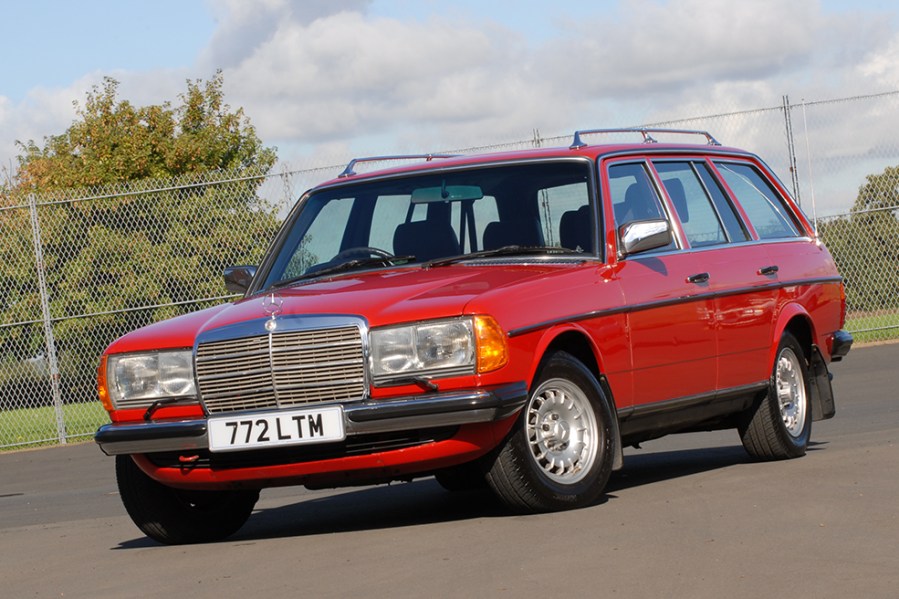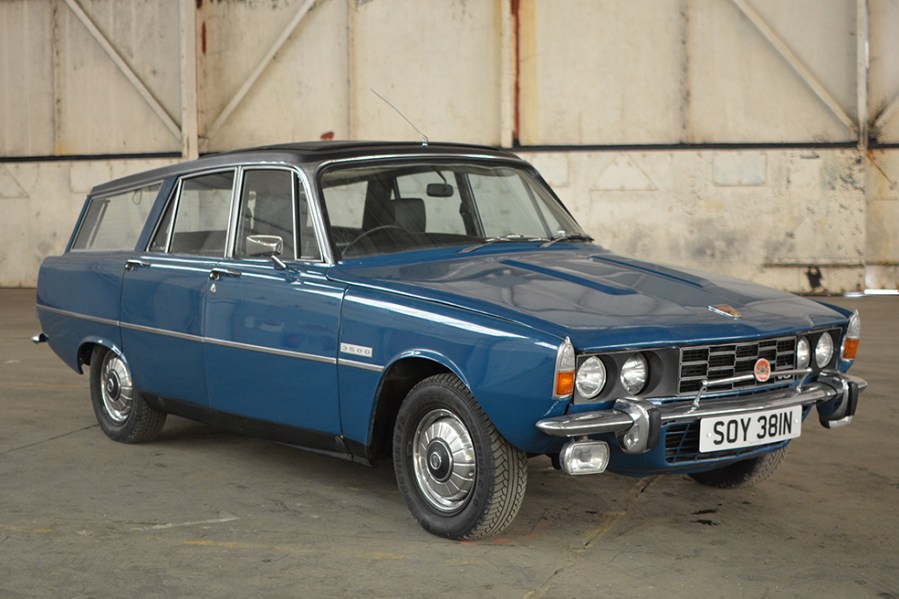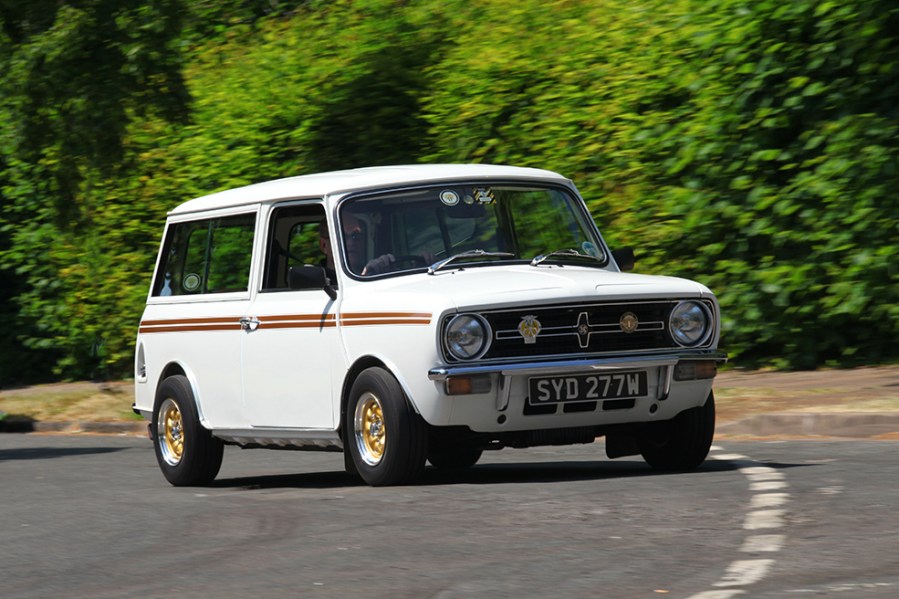SUVs rule the roost today but there’s still nothing like a practical classic estate. Here are favourite load-lugging classic cars
Words: Sam Skelton, Jeff Ruggles
Before the days of wall-to-wall SUVs, the estate car was king if you had a family and lots of stuff to lug around. Many were treated as mere workhorses, used for tip runs and thrown away, but as the years have been ticked away, there are certain models that have become just as desirable – or even more so – than their saloon equivalents.
It’s not hard to see why. In many cases, a classic estate will have all the qualities of a standard saloon, but with the added lure of greater rarity, increased practicality and – on some occasions – better looks. Here, we’ve selected eight classic estate cars that were almost all initially offered as saloons, but which many feel are at their in estate car form.
Mini Clubman Estate
British Leyland chose to replace the Riley Elf, Wolseley Hornet and the wooded Traveler/Countryman pairing in one fell swoop, with the Mini Clubman range of 1969. Even the Cooper wasn’t immune; the 1275GT replaced that and saved BL the royalties into the bargain.
With all posh Minis unified under one new face, BL was able to focus upon its corporate image. And the Clubman fulfilled that perfectly; with a Maxi-aping nose which would also be seen on the Marina of 1971. The Clubman Estate bought you mock wood appliqué, a new square nose, square dash binnacle in front of the driver, and plush vinyl seats.
Later models even got a bigger 1098cc engine from the Allegro range, though they lost the fake wood in favour of a pair of snazzy stripes and some new hubcaps. For the last hurrah of the estate model, it gained a slightly new grille and dropped back to 998cc for the A+ in the run-out HL estate. By this point the estate was the last surviving Clubman in a range reduced by the launch of the Metro, and would itself be discontinued by 1982.
Buying a Clubman estate is fraught with the same pitfalls as any Mini, albeit with more space and better underbonnet access. Check thoroughly for corrosion, as these cars can and will rust anywhere. Floorpans, A panels and sills are known weaknesses, but in terms of body and trim almost everything can be sourced.

BMW 3 Series Touring (E30)
The image-conscious early 80s saw a new breed of compact executive models like the Mercedes-Benz 190E and BMW E30 3 Series open a new gateway into a hitherto unachievable prestige fold, setting a ball rolling that still hasn’t run out of momentum.
In the case of the BMW, the E30 arrived at just the right time to ride a new wave of 1980s Yuppie aspiration. It wasn’t the first 3 Series – that honour belonged to the neat but rather left-of-field E21 model launched in 1975 – but it was the car that kick-started BMW in the UK, building on the success of the excellent E28 5 Series that had been revealed in 1981.
Launched in autumn 1982 and arriving on British shores early the following year, the E30 looked similar to its E21 predecessor but was in fact almost completely new. The styling remained conservative, but with strong build quality, impressive levels of refinement and the cachet of the BMW badge, the E30 was an immediate hit.
Halo models like the 323i, 325i and M3 homologation special boosted its image, but there was also time for it to kick start a new market niche – that of the ‘lifestyle’ estate that had been pioneered to an extent by Reliant with the Scimitar GTE.
It was first launched in April 1988 as the 325i Touring, an expensive but trendy estate that could manage 130mph, and would soon be available as a 320i, 318i and lastly a 316i. The Touring began life as an after-hours conversion on a four-door saloon but when BMW top brass chanced upon it, the green light for development for production swiftly followed. Truth be told, the high boot sill made it difficult to load and it wasn’t all that big anyway, but that wasn’t the point – it looked sleek and had the right image. Besides, it was never meant to be a big utilitarian estate car.
The Touring remained in production until 1994, making it the last E30 variant standing. Today, it remains a trendy classic estate, and that’s reflected by prices. A smart Touring isn’t as desirable as a 325i Sport or an M3, but can carry as much as a 50 per cent premium over an equivalent-four door saloon. Scruffy four-pots can be £3000, but a nice 325i Touring could set you back £15,000.

Volvo 200-Series
The sturdy Volvo 200-Series is another classic that tends to carry more desirability in estate form. It was the company’s first family load-lugger though; that was the Volvo Duett, introduced in 1953 and based on the chassis of the PV444 and PV544 models. We also got an estate-bodied Amazon from 1962, but it was the 145 model of 1967 that really set the ball rolling. This would provide the basis of the 200, which would remain on sale for almost two full decades.
The 200-Series made its debut as the 244 saloon in 1974, with the 245 estate following in 1975. Despite looking similar to its predecessor, the main improvements concerned safety. Following extensive safety research in the VESC development vehicle, the new Volvo featured large front and rear crumple zones that would absorb impact energy to protect occupants. It also borrowed the VESC concept’s ‘shovel-nose’ front end, which helped to modernise the look. Meanwhile, new overhead-cam engines replaced the old pushrod units, and the new cars also trumped the 140 in boasting rack-and-pinion steering.
Unsurprisingly, the now-ubiquitous estate model was a mainstay of the range. A dual rear jump-seat was available, giving this family estate carrying capacity to rival a small minibus, while impressive safety features were allied to a comfortable ride, an upmarket cabin in higher trim levels and a vast 1160 litres of boot space.
Also made available was a 265 model, sharing essentially the same styling but with 2664cc V6 power rather than four-cylinder engines. The V6 models would be phased out by 1985, having been displaced by the arrival of Volvo’s new 760 flagship. Later cars would simply be known as 240 and 260, with saloon production ending in 1991 and the estate surviving for two more years, when the run-out Tørslanda became available.
Of course, the 200 wasn’t the only Volvo estate line to make its mark. The 700 and 900 series were also beloved in load-lugging form, and the distinction of being the first and last estate car to race in the BTCC series also goes to Volvo, which caused a stir when it entered the 1994 series with an 850 estate. Though the 850s didn’t win the championship, drivers Rickard Rydell and Jan Lammers were well up the field in the standings.
Nowadays, the 200 still makes for the perfect year-round family classic. Prices start from around £2500, but a tidy Tørslanda could set you back as much as £8000. For such unburstable durability, we don’t think that’s out of the way.
Mercedes S123
Solidly built, over-engineered and safe, the Mercedes W123 was launched in 1976 and continued in much the same vein as Mercedes’ previous W114/115 ‘Stroke Eight’ models, albeit with a wealth of improvements. It was initially available as a saloon and UK cars could be specified with an almost overwhelming choice of three diesel and four petrol engines, ranging from the entry-level 200 to the range-topping 280 with fuel injection.
A coupe would also join the range as before, but from 1978 the 123-series could offer something its predecessors couldn’t – the brand’s first ever factory-built estate. Given the chassis code S123 and badged T for ‘tourismus und transport’, it was offered with the 2.3-litre four-pot petrol, 2.5 and 2.8-litre six-pot petrols or a 2.4-litre diesel engine as the 230T, 250T, 280TE and 240TD.
A facelift for 1980 brought rectangular halogen headlamps previously only fitted to coupe and 280E models to the whole W123 range. Rustproofing was stepped up with wheelarch liners as standard, while revised gear ratios improved economy. ABS became optional too, and the 230T was dropped from the range as the new M102-engined 200T and fuel-injected 230TE were added, plus the 300TD with its five-pot diesel.
Revisions in 1982 mean the last Mercedes-Benz W123 models are often considered the best of the bunch. A five-speed manual option replaced the original four-speed, along with standard power steering across the range. The W123 saloon models were discontinued in 1985, but the S123 would last into 1986, with the estate accounting for around 200,000 cars from a total of nearly 2.7 million across the range.
Expensive when new, the estate proved to be an excellent load-lugger, beloved of the middle classes several years after its replacement. Today it makes for one of the best classic estate options around, and has become ever-more desirable for enthusiasts with a family to carry around. Estates command a considerable premium over saloons and can even edge past what you might pay for a clean two-door CE coupe. The 230TE or 280TE are arguably the ones to have, but prices can push past £20,000 – and we’ve seen them advertised for much more.

Triumph 2000
Released within a week of each other in 1963, The Triumph 2000 and Rover 2000 (P6) were both prime examples of a new breed of aspirational compact executive cars. But while the Rover was the more advanced of the two, the Triumph’s neat Michelotti styling was arguably more attractive, and it could boast the smoothness of six-cylinder power as opposed to a four-pot.
The Triumph would gain further appeal in 1965, with the addition of the estate model. Although built by Carbodies using saloon shells plucked from the line that were then converted to estates and then returned to Canley for assembly, the Triumph estate was a regular production model that could be ordered at the dealer. The Rover P6 could be had as an estate, but only by taking a newly purchased car to one of the aftermarket converters at great cost. This gave Triumph a definite edge in the market, since the plush new variant was a world away from the utilitarian estates offered by other makers at the time.
In 1968, Leyland merged with BMC to create British Leyland and suddenly the Rover was an in-house rival. Now aware that the P6 would soon be offered with the 3.5-litre V8, Triumph stretched the 2000’s engine to 2498cc and fitted Lucas fuel injection for improved power and the opportunity for a unique marketing twist.
The following year the Triumph evolved into its Mk2 incarnation, with Michelotti penning an extended nose and a new back end for the saloon, though the rear of the estate remained the same as before. A further facelift arrived in 1974, which added the Stag-style radiator grille and added the carb-fed 2500TC model, which was designed to counter the Lucas injection system’s reputation for unreliability.
The 2500TC proved to be sufficiently popular for the injected 2500 PI to be dropped in 1975, at which point the new range-topping ‘S’ specification was introduced with 14-inch Stag-style GKN alloy wheels, additional instrumentation and tinted glass. Production of the 2000/2500 would last until 1977, when, like the P6, the car was effectively replaced by the Rover SD1. The last car built was a 2500S estate.
Today, the estates do tend to warrant a premium over the equivalent saloons of around 15-20 per cent, with the Mk1 PI estate the most desirable of all. However, with Mk2 examples starting from as little as £3000, the big Triumph remains an affordable classic estate.

Ford Granada
The Granada (and Consul) of 1972 got big Fords back on track following the underwhelming performance of its gargantuan Mk4 Zephyr and Zodiac predecessors. A joint project between Ford in Germany and the UK, it was built on a fresh platform and its macho bodywork took cues from the USA and Cortina Mk3.
The Consul moniker was used for cheaper models, which had a choice of either the unloved 2000 V4 or the 2500 Essex V6 in base or L trim – the exception being the Consul 3000GT that shot to fame in The Sweeney. The Granada was available as a 2500 or 3000 in standard (renamed Granada XL from January 1974) or in plusher GXL trim. Although only available as a four-door saloon at first, the range would soon be joined by the cavernous estate in September of 1972, available with V6 engines only.
It wouldn’t be until April 1975 that a 2.0-litre Pinto four-pot was fitted to the estate, initially in Consul L guise, though the Consul name would be dropped within six months as all models became known as Granadas.
The Granada Mk2 of 1977 modernised the look of the Granada and gave it the Uwe Bahnsen styling cues of other contemporary Fords, but it was essentially a reskin of the Mk1 – especially for the estate, which retained the same panels as the old car from the A-pillars back. Cologne 2.3 and 2.8-litre V6 engines replaced the Essex units, with fuel injection for the range-topper. The 2.0-litre Pinto was also a fixture, as was a 2.5-litre diesel. A facelift in 1981 smartened the looks and would include the sporty 2.8 Injection and the flagship Ghia X model, complete with leather upholstery.
The Mk3 Granada of 1985 was a radical departure, replicating the Sierra and Escort by bringing in a hatch to replace a saloon. There was initially no saloon or estate, and the latter wouldn’t be redressed until 1992. The Granada’s controversially styled Scorpio replacement was also available as an estate, but for us, the peak was the Mk2 facelift cars in Ghia X or 2.8 Injection forms. It seems that others share that view, for a nice Mk2 estate tends to carry a price premium over a saloon. You might find one for £5000, but you’ll more likely need five figures for a smart example. Mk1s are also sought-after but rare; the last example we saw at auction sold for over £16,000.

Rover P6
The P6 estate was strictly a conversion rather than a factory-produced model. But because of the way the P6 shell is contructed it’s possible to convert any saloon to an Estoura if you have the bits. A rotten base unit need not therefore condemn an Estoura, if there’s a good donor car available. In fact, FLM Panelcraft would offer the conversion to used cars as well as new ones in period.
Battersea-based Panelcraft built the cars, which were then trimmed by Crayford, Hurst Park Motors or HR Owen, and sold exclusively via the latter from 1970. 160 were built in total, the majority based on V8 models, though some four-cylinder Estouras do exist.
As the Estoura bits can be swapped, the majority of buying tips need to centre on the P6 underneath. This means that the primary concern is the condition of the base unit. Check under the rear seats (which lift out), as corrosion here can signal worse where you can’t see it.
Check also the sills and the front bulkhead; the latter of which is a key structural area and braces the front suspension. Make sure none of the doors have dropped, either. Mechanically, rear brakes and the handbrake in particular can seize, and many are afraid of working on them as they’re inboard discs. It’s simple, just unconventional. Remember that a ropey Estoura can be restored using a good saloon as a base.

Morris Traveller
Now in its 76th year, the ubiquitous Morris Minor remains one of Britain’s best-loved classics, but it’s the wood-framed Traveller version that is perhaps one of the most recognisable classic estate cars. It arguably set the template for the practical family estate offering more space inside for people, dogs and other clutter than the saloon models, and had a production run that covered three different decades.
The Minor first made its bow in 1948, but one of the surprises is just how long it took for an estate version to arrive, with the Traveller not appearing until 1953. But the car’s designer, Alec Issigonis, and other BMC engineers were working on the project long before it came to production fruition, with development of estate car versions of both the Minor and the larger MO-series Oxford occurring simultaneously. It’s not surprising, therefore, that what would come to be known as the Morris duo would feature broadly similar rear-end designs.
The idea of a woody was unashamedly American influenced, this being the era when British car designers were adopting the style and creativity of their US counterparts. The end result was a car that used the front end of the Minor saloon mated to a rear based around the existing floorpan but featuring a structural wooden framework, aluminium rear roof section, a pair of side-opening rear doors and a generous load area.
The choice of an ash framework made production sense – not only was the material readily available in 1953, the Traveller’s wooden roof cant rails also brought together a structure of impressive integral strength. Sadly though, the Minor Traveller was not the profit-generating model it should have been – although this certainly wasn’t through lack of buyers, as more than 215,000 were sold. The problem was that despite assembly of the Traveller’s wooden framework being an in-house affair, it was a labour-intensive process.
The Traveller became more useable as time went on. Early cars had the 803cc A-Series, but the 1956-on Minor 1000 variant was particularly significant, bringing BMC’s newly enlarged (948cc) version and an output of 37bhp. By 1962, the engine was increased to 1098cc in October ’62, boosting its output to 48bhp.
The Traveller would stay in production longer than the saloons, finally reaching the end in April 1971. It became a classic almost instantly, and today still enjoys very strong club and specialist support. Reflecting a slight superiority in the desirability stakes, a Traveller will tend to cost you more than an equivalent saloon. A useable example can be found for £7000–9000, with excellent cars priced around £13,000–15,000 and show cars pushing £20,000 and beyond.






